א-סימטריה
יון-הי קים / פול זורקר
אוצרת: אפרת גל
06.03.2014 - 28.03.2014



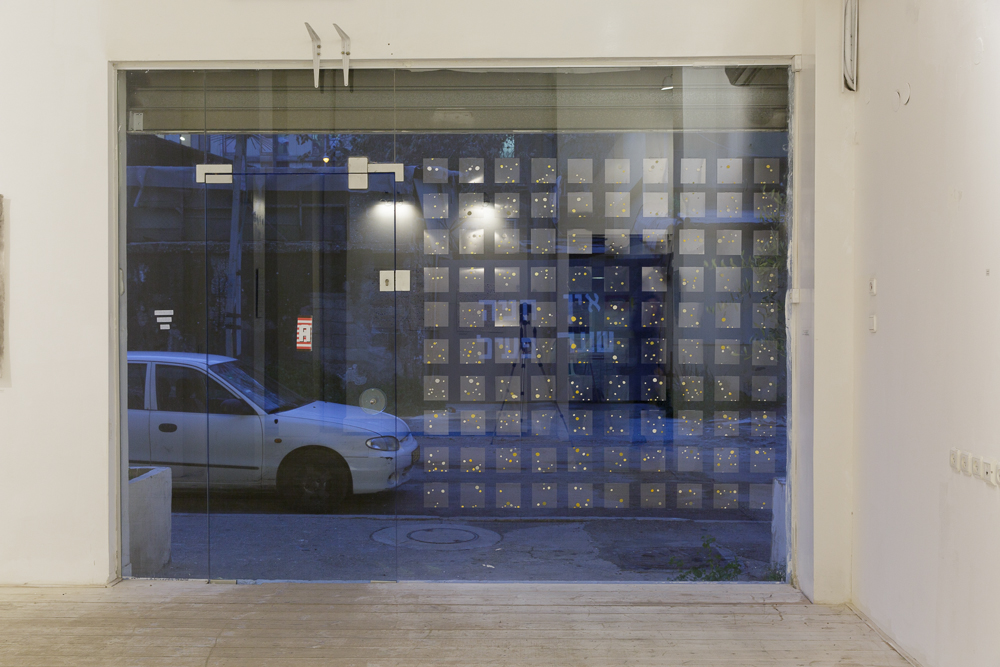
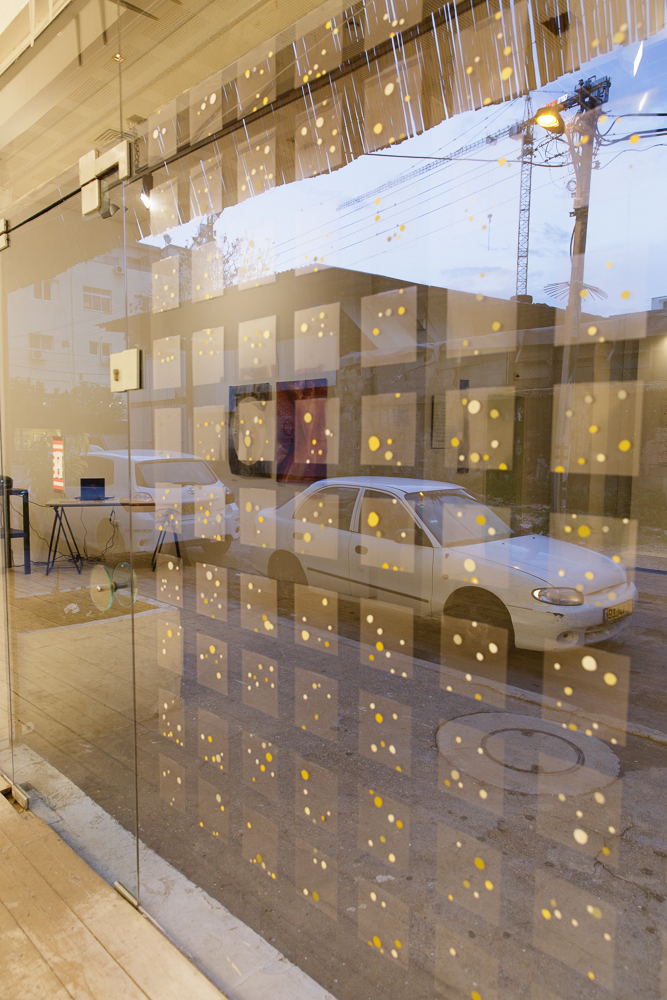
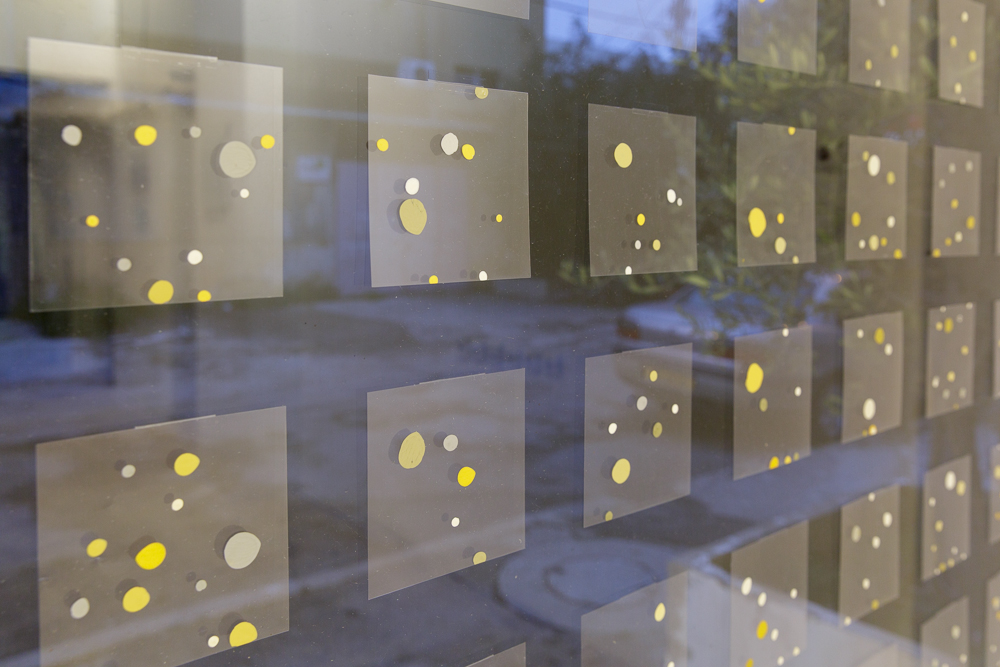
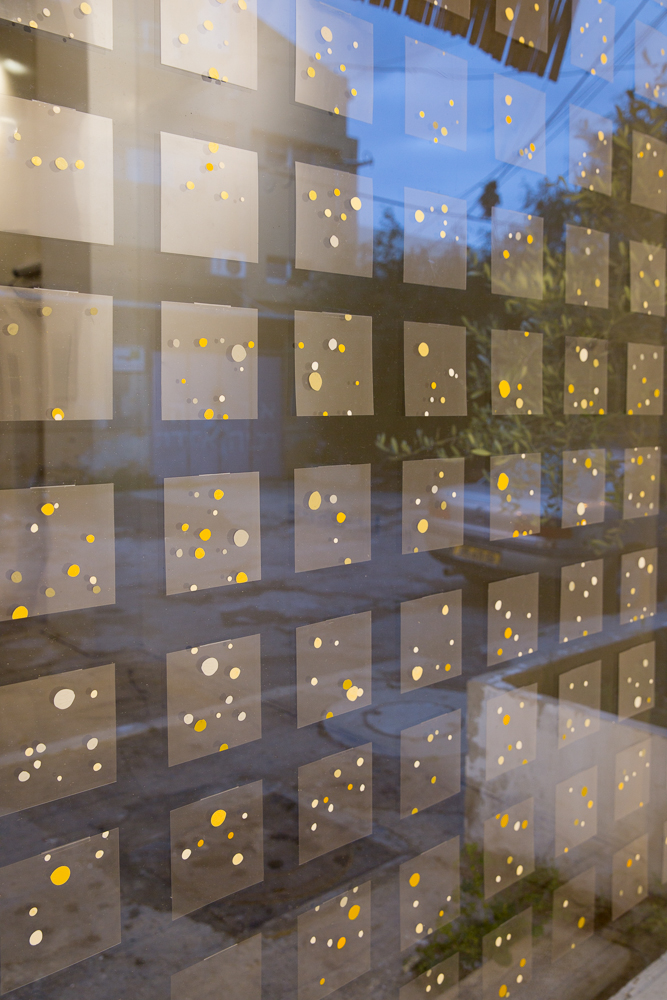




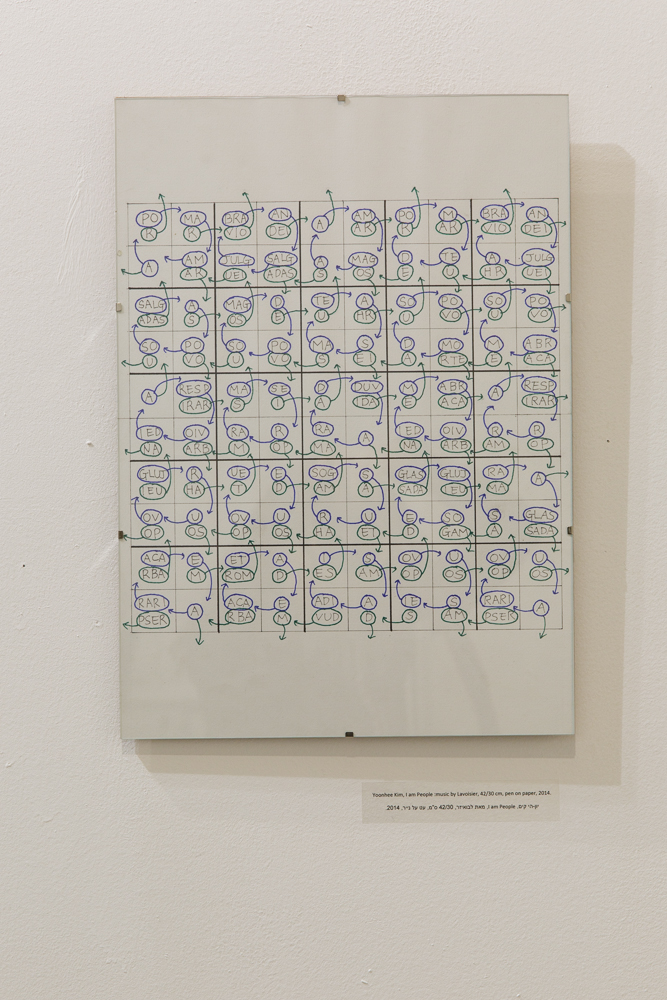







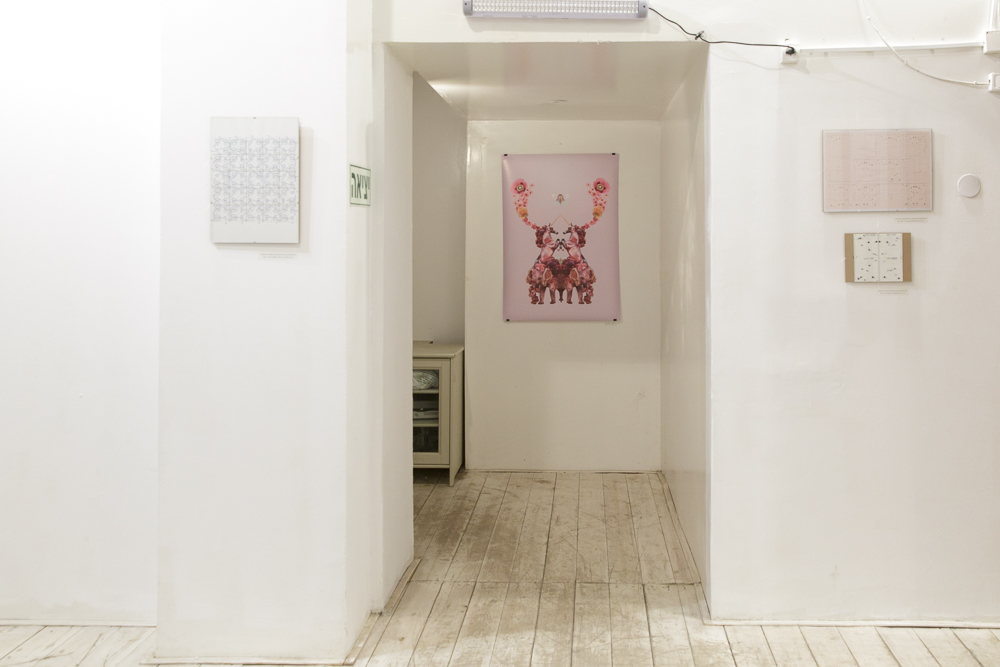




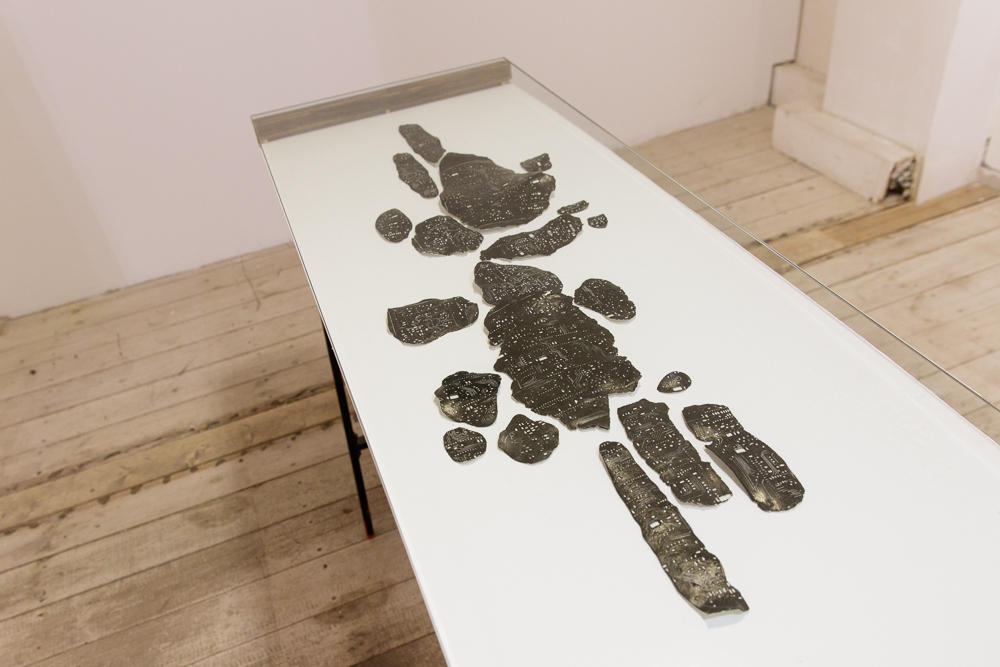
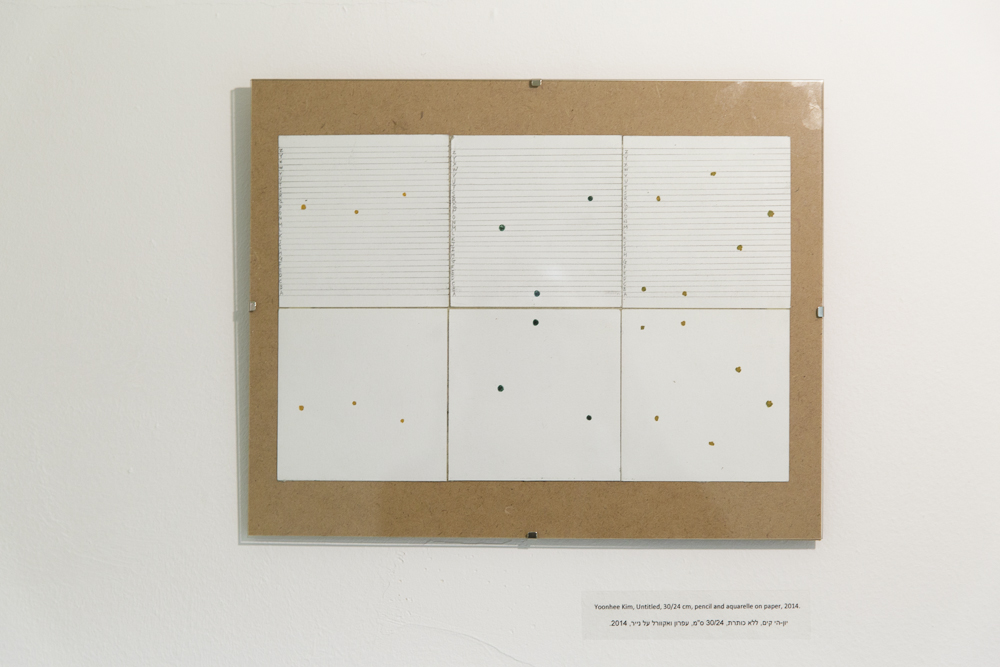
קים וזורקר, עוסקים שניהם בתרגום של דימויים באמצעות מדיה מגוונת ובתקשורת הנתונה בתוך מערכת חוקים או גריד.
הציורים שמציגה יון-הי קים מבוססים על טכניקת הדקורציה הצרפתית- "דקלקומניה "(decalcomania)- טכניקת הדפס באמצעות העברת צבע ממשטח אחד למשנהו על ידי הצמדת שני המשטחים זה לזה, אשר תוצאותיה אקראיות.
קים מציגה עבודת חלון אשר נוצרה במיוחד עבור החלל של אלפרד ודיאגרמות שונות אשר מתוות את ההיגיון שבבסיס יצירתה. האובייקטים שהיא יוצרת בטכניקת הדקלקומניה, נראים כשרידי הירוגליפיים מסתוריים אך נוצרו באמצעות הטבעת פני השטח של לוח מחשב על חימר סיני. קים מקשרת את אופי הטכניקה לתהליך תרגום בין שפות, אשר לעיתים הינו שרירותי ומשנה את מובנה המקורי של המילה.
תהליך הציור שלה שואב את השראתו משיר קאנון מעגלי, כאשר מספר אנשים שרים את אותו השיר ומתחילים בעיתוי שונה. מודל אחר בו היא משתמשת הוא פירוק של מילותיו של שיר לאלף-בית ותרגומו לכתמי צבע על פי גריד.
פול זורקר מציג זוגות בלתי סימטריים של דימויים- רישומי דיו והדפסים דיגיטליים בהשראת הספר "המכניזם של הפיסיונומיה האנושית". הספר נכתב על ידי הנוירולוג הצרפתי בן המאה ה-19 דושן דה בולון, אשר חקר כיצד שרירי הפנים מפיקים הבעות מגוונות של רגש. בהשפעת הפיסיונומיה- תורת הפרצוף המסורתית, האמין דושן כי הבעות הפנים הן ראי לנשמה האנושית ואופיו של האדם המסויים. הדימויים הגרוטסקיים בספר מתעדים הבעות שנוצרו בעקבות גירוי שרירי הפנים בחשמל.
לרישומי הדיו אותה כותרת כמו הצילומים מן הספר של דושן אשר היוו את ההשראה, אך סדרת ההדפסים נקראת- "נוף רגשי" ונוצרה תוך שימוש בדימויים של בשר נא ומתוך התייחסות למצבם של הנבדקים בניסוי מהמאה ה-19, אשר שימשו כאובייקט והוכרחו לחייך או לצחוק בשעה שנגרם להם כאב. המיצב שמציג זורקר כולל גם סימולציית תלת מימד שמגיבה לפניהם של המבקרים בתערוכה בזמן אמת. בדומה לצילום, האור של המקרן משמש ללכוד את דמותו של המבקר, אך לכידת הדימוי מתרחשת לרגע בלבד בחלל עצמו, אינה מתועדת ואינה ניתנת לשכפול.
התערוכה "א-סימטריה" היא מפגש רב תרבותי אשר עוסק בתקשורת אנושית, בתהליך הבלתי מושלם של תרגום רעיון ממדיה אחת לאחרת, בנסיון הבלתי שלם להתחקות אחר רגשות וביופיין של תופעות הלוואי של תהליכים אלו.
Asymmetry
Yoonhee Kim & Paul Zurker
Curator: Efrat Gal
Kim and Zurker are both dealing with translation of images in different media and communication within a given system and grid.
Yoonhee Kim's practice is based on the French decorative technique ʻDecalcomaniaʼ; a printing technique of pressing color on pottery or other materials and coping it again and again, creating unpredictable results.
She is showing a window work created especially for Alfred's space and some diagrams tracing the logic of her drawings. The objects she is creating with the Decalcomania technique look like mysterious hieroglyphs but are made by pressing computer mainboard on Chinese clay. Kim is connecting these acts to the process of translating languages which is arbitrary and constantly reforming the original meaning with another figure.
Through her continuous process, she is researching the language's system of images. Her working process is inspired by the model of a Round Song, when more than two people singing the same song but start in a row. Another fascination tool she is using is reconstruction of song lyrics to alphabet- translated systematically to drawings series.
Paul Zurker is showing asymmetric pairs of images; ink drawings and digital prints. Both inspired by images from the book "The Mechanism of Human Physiognomy". The book was written by the 19th century French neurologist Duchenne, who wanted to determine how the muscles in the human face produce facial expressions which he believed to be directly linked to the soul of men. The images describes facial expressions triggered with electrical probes.
The ink drawings got the same title as the original photo from Duchenne's book but the digital prints series is called "Emotional Landscape" and was created using images of dead meat, keeping in mind the situation of the person that was tested, regarded as an object and forced to smile or laugh while feeling pain.
Zurker's installation consist of also a real-time generated 3D simulation which reacts to the visitor's face. Using the principle of photography, the light of the projector is used to capture the image of the visitor's figure but it captures a singular moment in the existing space without producing an image that can be reproduced.
The exhibition "Asymmetry" is a cross cultural meeting dealing with human communication, the non- perfect process of translating a concept from one media to another, the incomplete attempt to trace human emotions and the beauty in the undesired effects.

